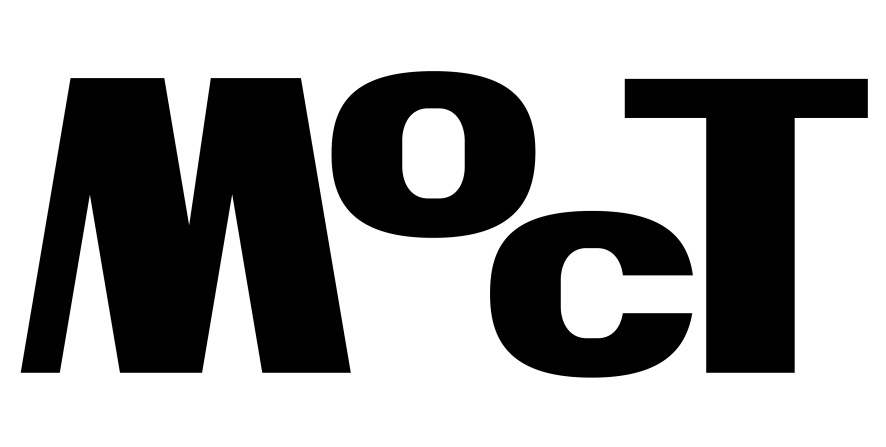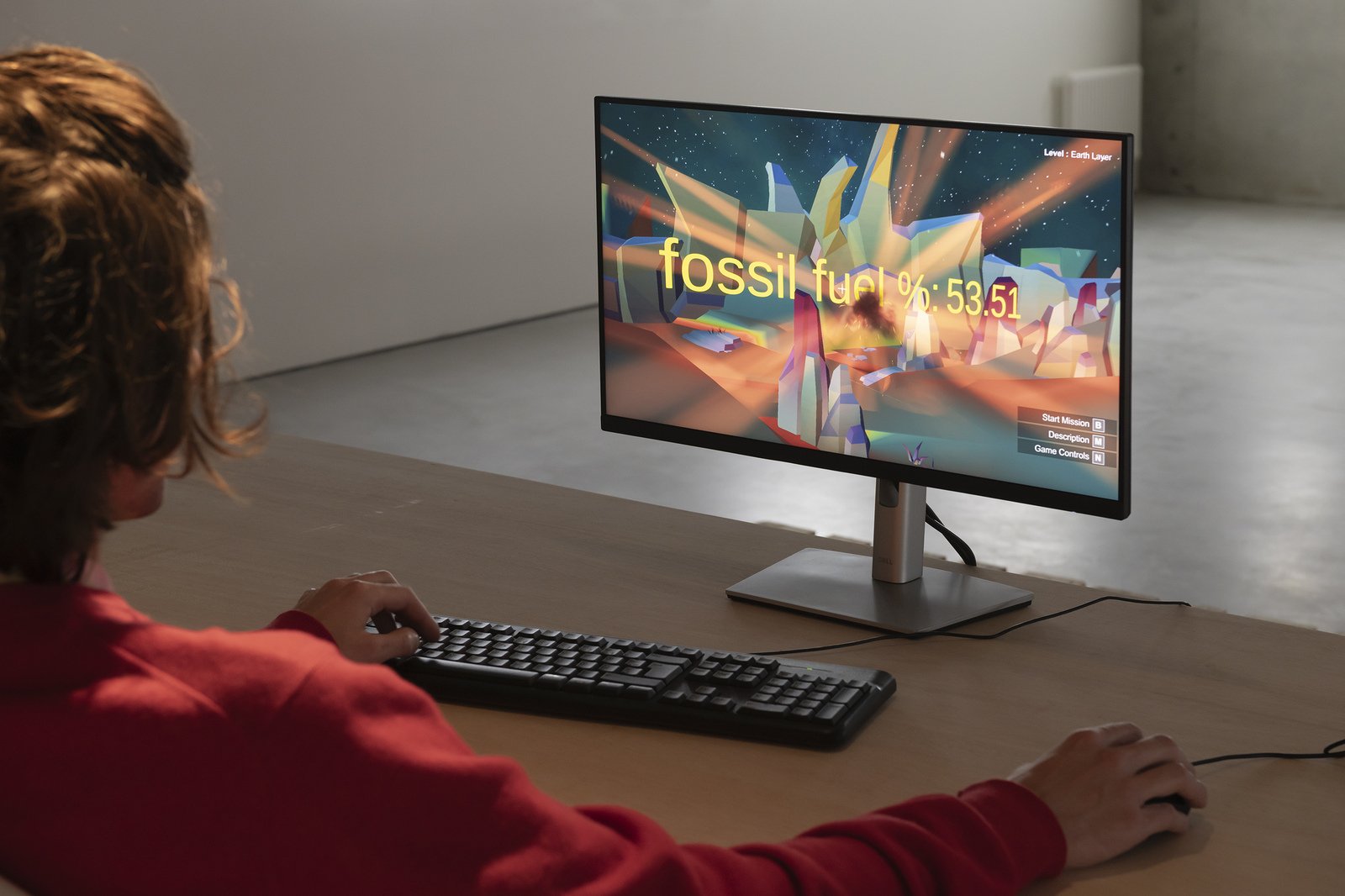Joachim Aagaard Friis
”Infrastructure is not identical to system or structure, as we currently see them, because infrastructure is defined by the movement or patterning of social form. It is the living mediation of what organizes life.”
As the late literary scholar Lauren Berlant wrote back in 2016, infrastructure is a movement of social form – not a static system. Since the concept became popularized, gaining traction in the art world through the second half of the 2010s, exhibitions have taken it up in many contexts, such as through themes of extractivism, settler colonialism, and the materiality of cybernetic systems. It is primarily the latter theme that is central to the exhibition Cyber Structures: Material Realities – Digital Experiences, which is presented by the art and digital technologies platform Elektron. It occurs across galleries and public spaces in Esch-sur-Alzette, the second-largest city in Luxembourg. Like recent exhibitions in Central Europe such as If disrupted, it becomes tangible at the National Gallery of Art, Vilnius (2023) and Seeing stones and Spaces Beyond the Valley at the Warsaw Biennale (2022), this exhibition grapples with the materiality of the digital technologies that surround us, as well as establishes links between infrastructures of modern technologies and older means of communication and extractivism. This includes the vast network of tunnels and mines that were central to steel production in Luxembourg during the 19th and 20th centuries, which I will return to.
The overarching theme of Cyber Structures is the highly material reality of the digital systems that we engage with constantly, and that we paradoxically relate to with metaphors that presuppose immateriality and lightness. As is pointed out in the catalogue, data centres, underground cables, antennas, and satellites make up the material conditions of possibility for the network of the internet that we refer to in such light terms as “the cloud”; something that we can access anytime, from anywhere. Curators Françoise Poos and Vincent Crapon rightly claim that artistic exploration of these technologies and their physical construction can make us perceive our use of them in a new light. It can open up a space for critical inquiry around our collective imaginary of the “immaterial” digital sphere and its very real ecological, political, and social implications.
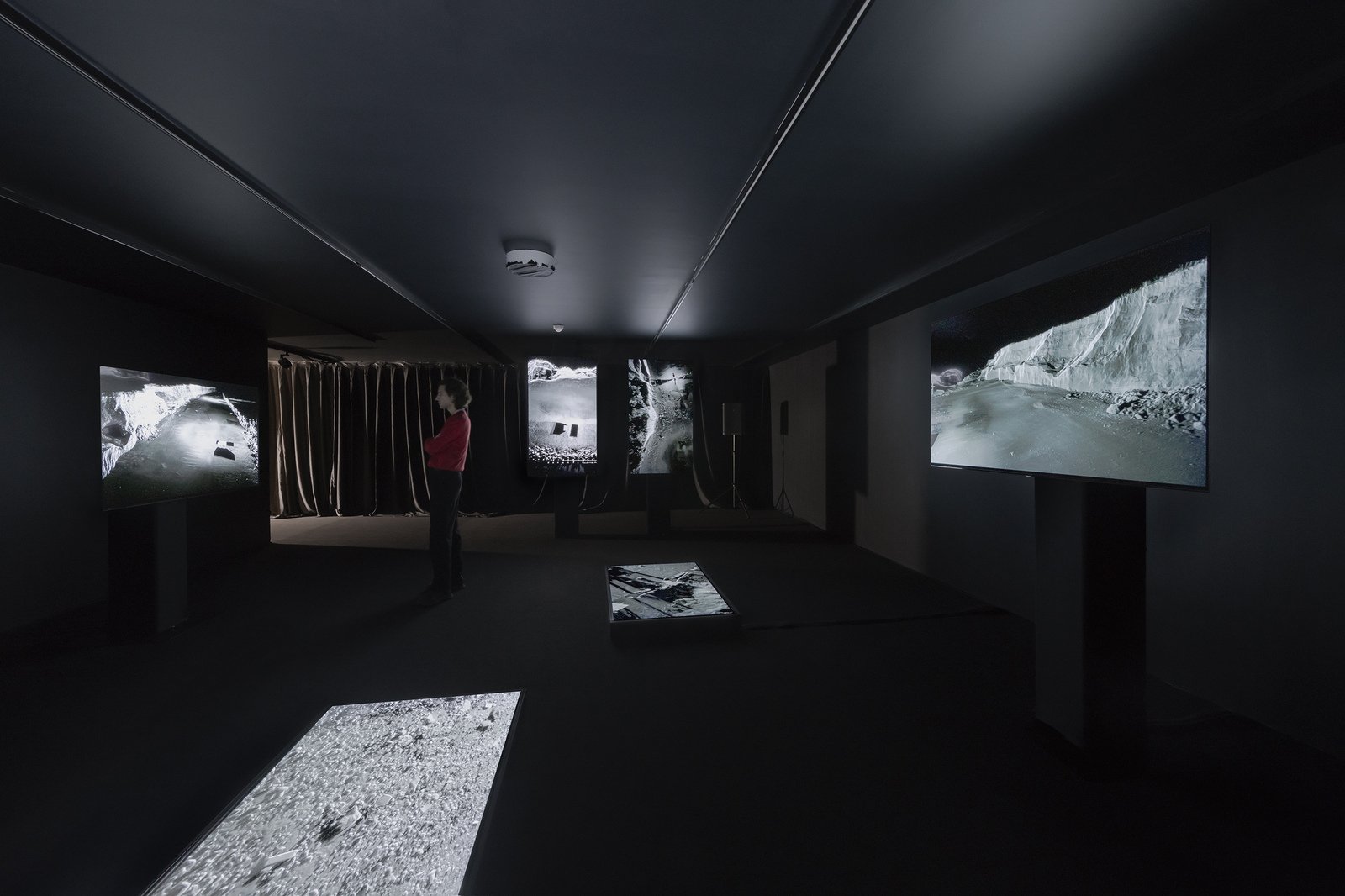
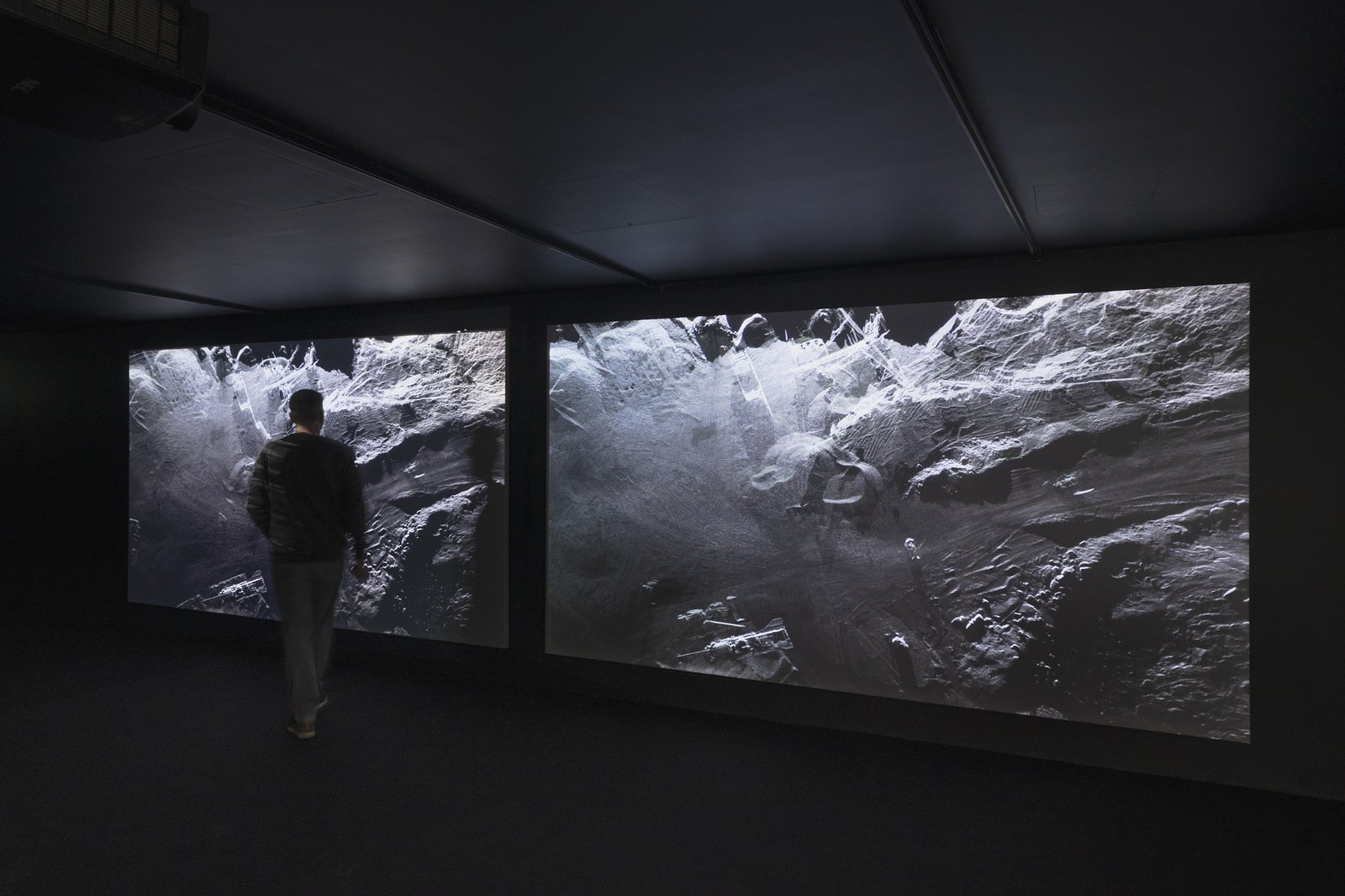
So how do the artworks of Cyber Structures do this? First off, by playing with temporality and dimension. Almost a dozen screens are surrounded by darkness in the immersive media installation FRAMERATE: Pulse of the Earth by ScanLAB Projects, which is exhibited in Konschthal Esch. The screens are installed on the walls and on the floor, and people are invited to take off their shoes and explore the room’s visuals from different angles. The artwork shows landscapes of all sorts in flux; in a forest, seasons pass by in a second. In a city, buildings are constructed in the blink of an eye and landfills instantly become mountains due to the immense and endless amount of trash that is brought to them. Created from thousands of daily 3D-scans of landscapes, FRAMERATE: Pulse of the Earth really does what the exhibition sets out to accomplish: to artistically explore the infrastructures (digital and physical) of daily life in a way that makes us perceive them entirely differently. The darkness and the soft surroundings of the room provides a comfortable space for this and the illustrations are stunning. The musical score that accompanied the work was, however, too determining for the experience of the visuals. Composed by Pascal Wyse, it had an air of classical music that can be found in many documentaries. It felt ill-fitting, like the intention was to induce a specific affect of “the sublime” related to the landscapes shown, which actually limited the potentially myriad interpretations of the video.
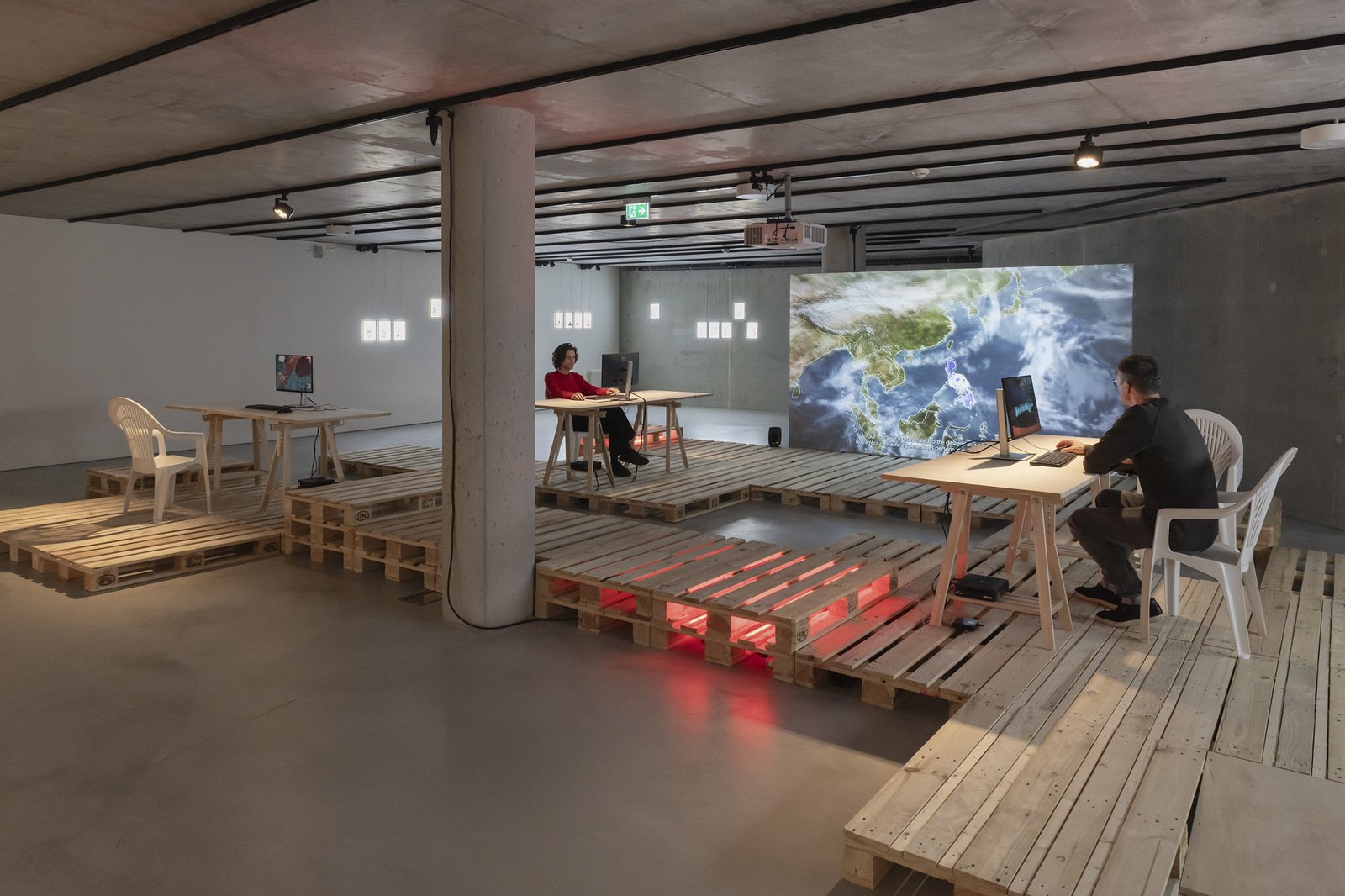
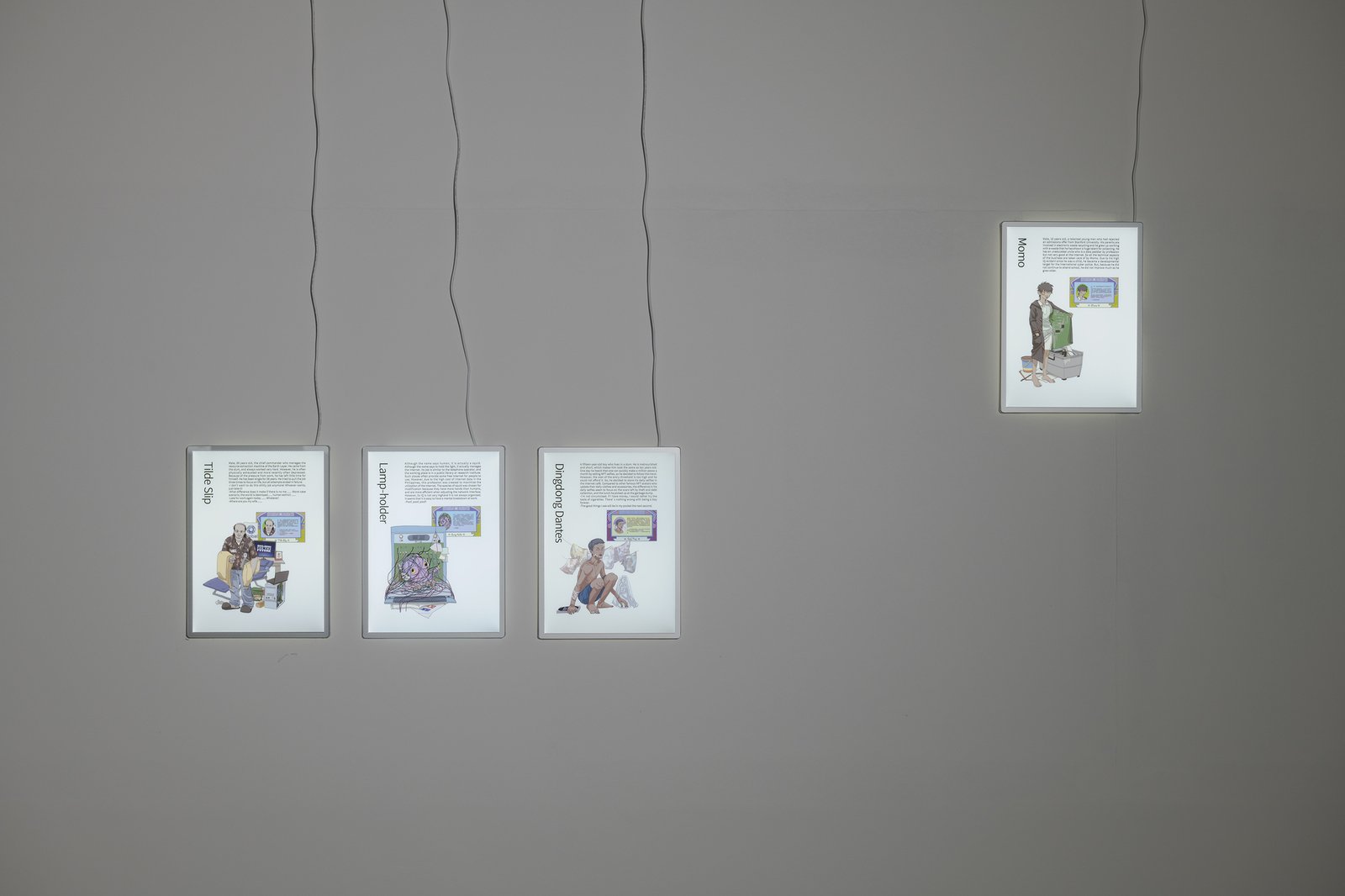
Also in Konschthal Esch, Ziyang Wu and Mark Ramos show a comprehensive, research-based work that spans video, interactive simulation, text, and animated renderings. FUTURE_FORECAST explores the infrastructures of the internet from a non-western, more specifically, Philippine perspective. Here, the implementation of new material infrastructure for better and more expansive internet access is in the making, with many stakeholders involved. The duo shows the complex political, economic, and ecological environments that surround this process of technological progress and the clash between market logic and traditional values, and the cultures that arise from them. No direct answers to the intricate situation of power and possibilities are given, but the multi-layered artwork gives access to its complexities at different levels. From an interactive computer game, to video, to animated renderings of new identities in the Global South in the age of digital power (a Filipino trafficker, a Chinese-American cyber police officer, a 15-year old NFT-selfie dealer are among the many examples), and a detailed text and map of research and history around the case, the artwork creates a space for many different people to be engaged. One of the more interesting concepts presented in this work is Benjamin Bratton’s theory “The Stack”, which proposes that the genres of computation – grids, clouds, apps, smart cities, and the Internet of Things – can be understood as a coherent whole (The Stack); an ever-evolving megastructure that is inseparable from humans and vice versa. The theory is a way to illustrate what Wu and Ramos are exploring in their work – the entanglements of digital infrastructures, social forms and traditions, inter-governmental surveillance, and ecological vulnerabilities.
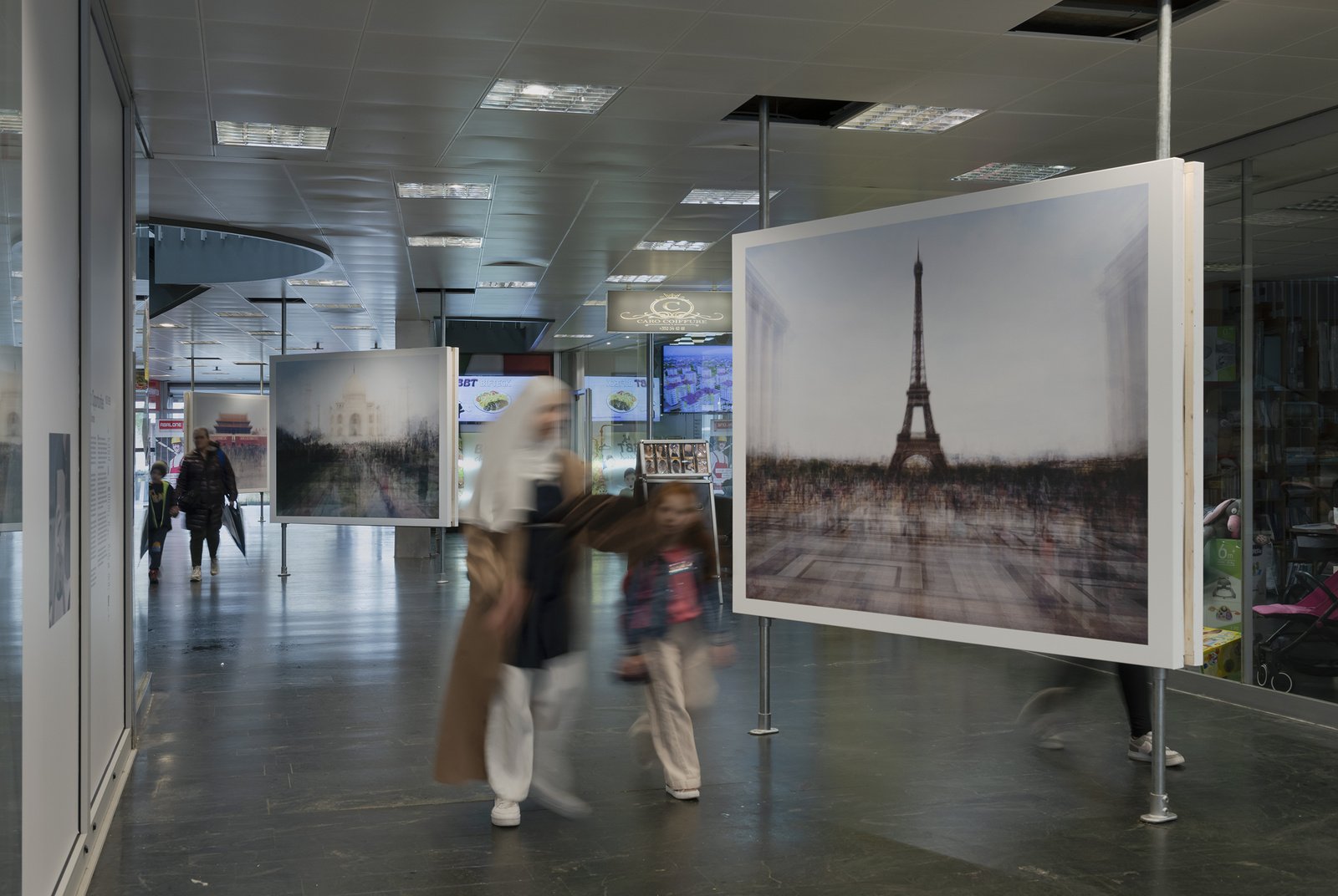
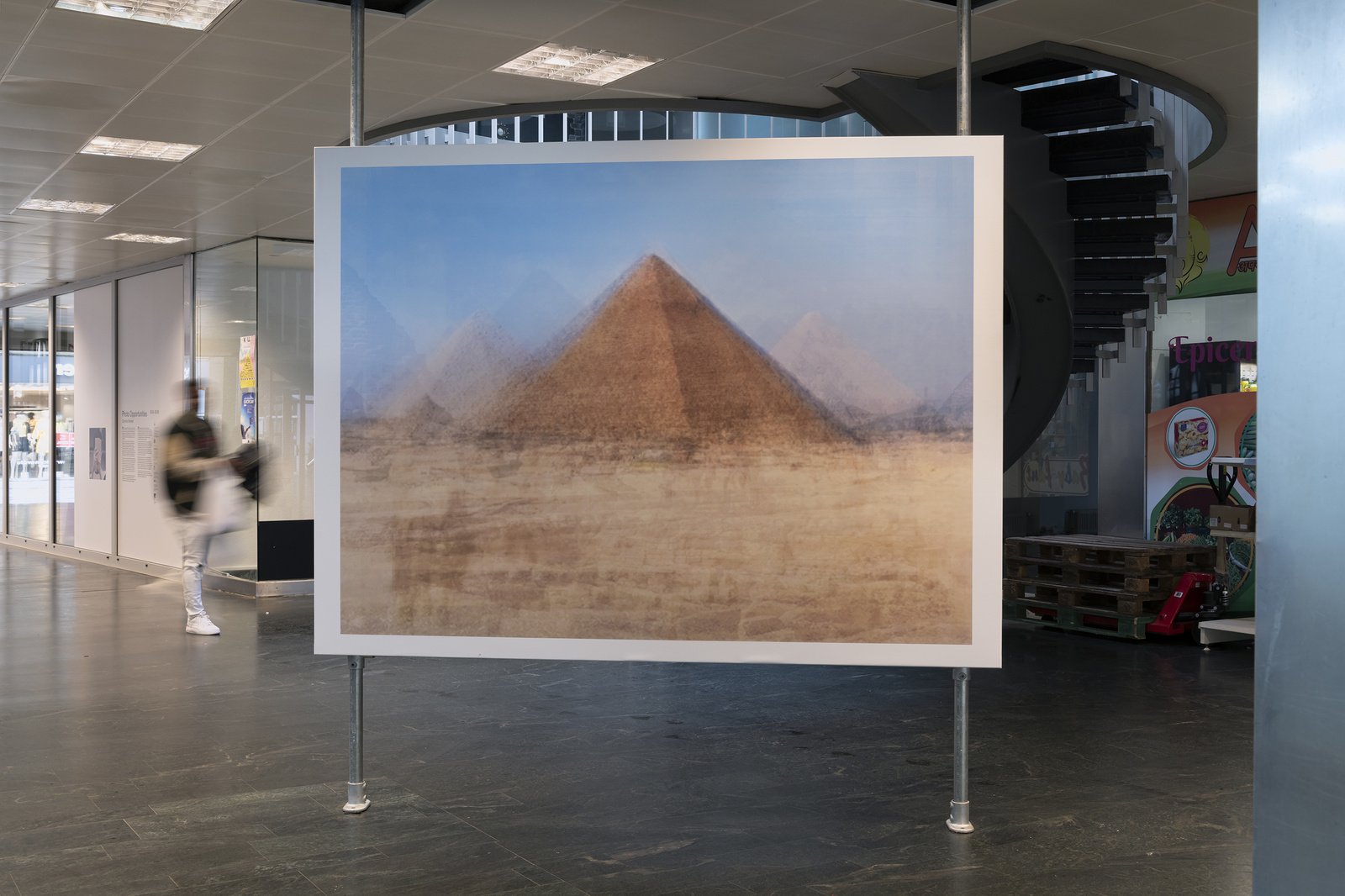
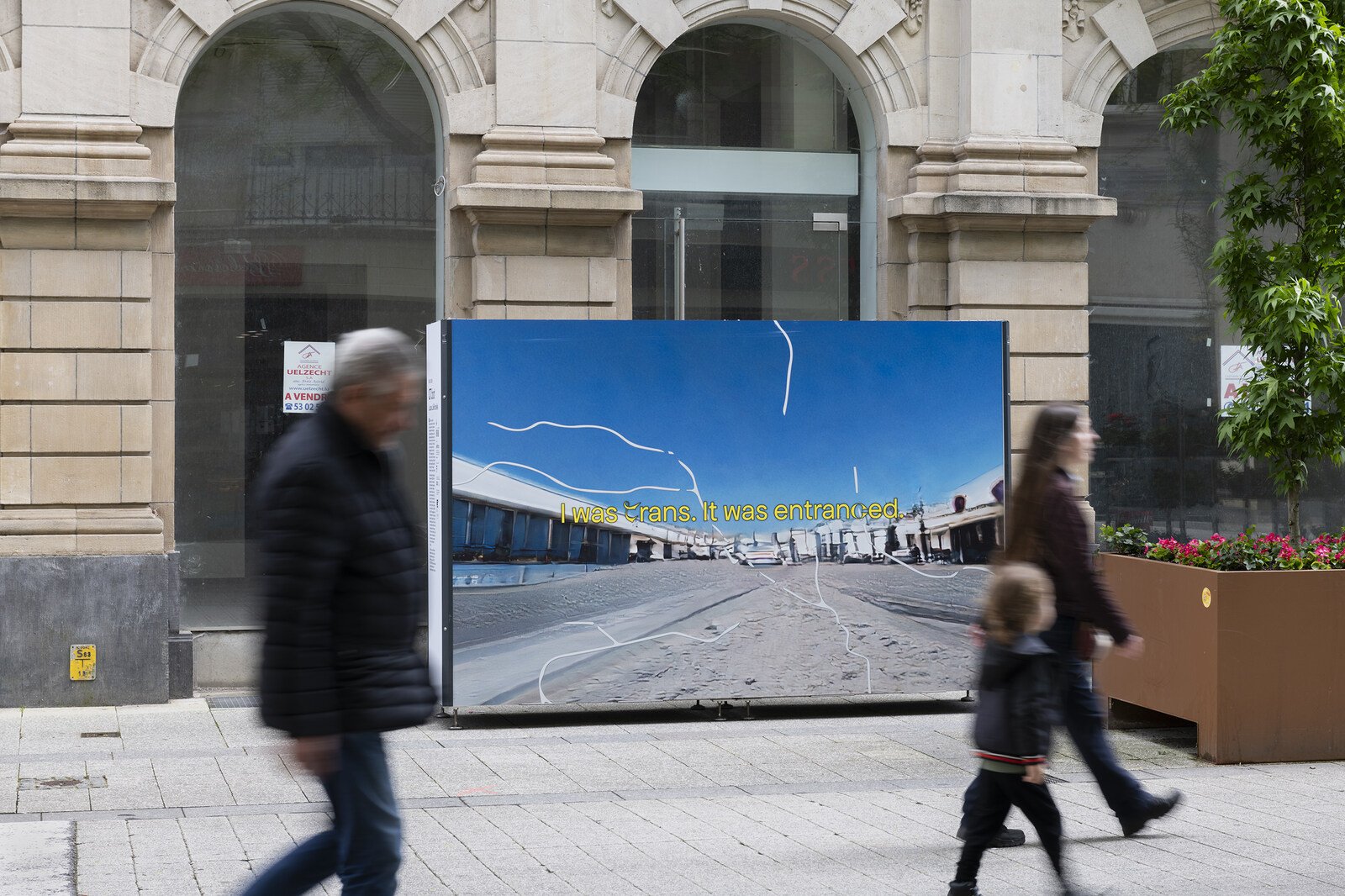

Between Konsthal Esch and Bridderhaus, the two main institutions that Elektron has collaborated with to host the exhibitions, there are several artworks in public space. Corinne Vionnet’s installation of web-based imagery stands out, because of its scale and great site-specific curation. Vionnet has been working with tourist photos and ephemera of tourist landmarks for decades. Photo Opportunities is presented in a shopping passage in the city center. Among stores and eateries from different parts of the world, eight large images of popular sites such as the Taj Mahal and the Golden Gate Bridge are installed. The images are composites of hundreds of photos that Vionnet has found online of the same site, layered on top of one another. An extra meta-layer is perfectly (or perhaps disturbingly) added when you watch a person posing in front of the artwork – a tourist capturing a photo of an image of tourist photos.
Lucas LaRochelle’s AI-generated motifs placed around the pedestrian street of Esch’s city center are also eye-catching. Made up of visual and text-based material from the community platform Queering the Map, which is a speculation on queer and trans futures. The texts and visuals of QT.bot invoke a disrupting and disorienting queer temporality. I am reminded of the writings of queer studies scholar José Esteban Muñoz, especially his seminal work Cruising Utopia, which theorizes a queer imaginary of utopian futurity. Interestingly, when I visited the installation by LaRochelle, the works were partially covered by the outdoor vendors – the texts and imagery blending completely into the cityscape as an almost-invisible but still suggestive imprint on its surroundings. This wasn’t ideal for the accessibility of LaRochelle’s work, but instead provided a relevant context for the work’s relation to themes of (in)visibility and non-normative uses of public space.

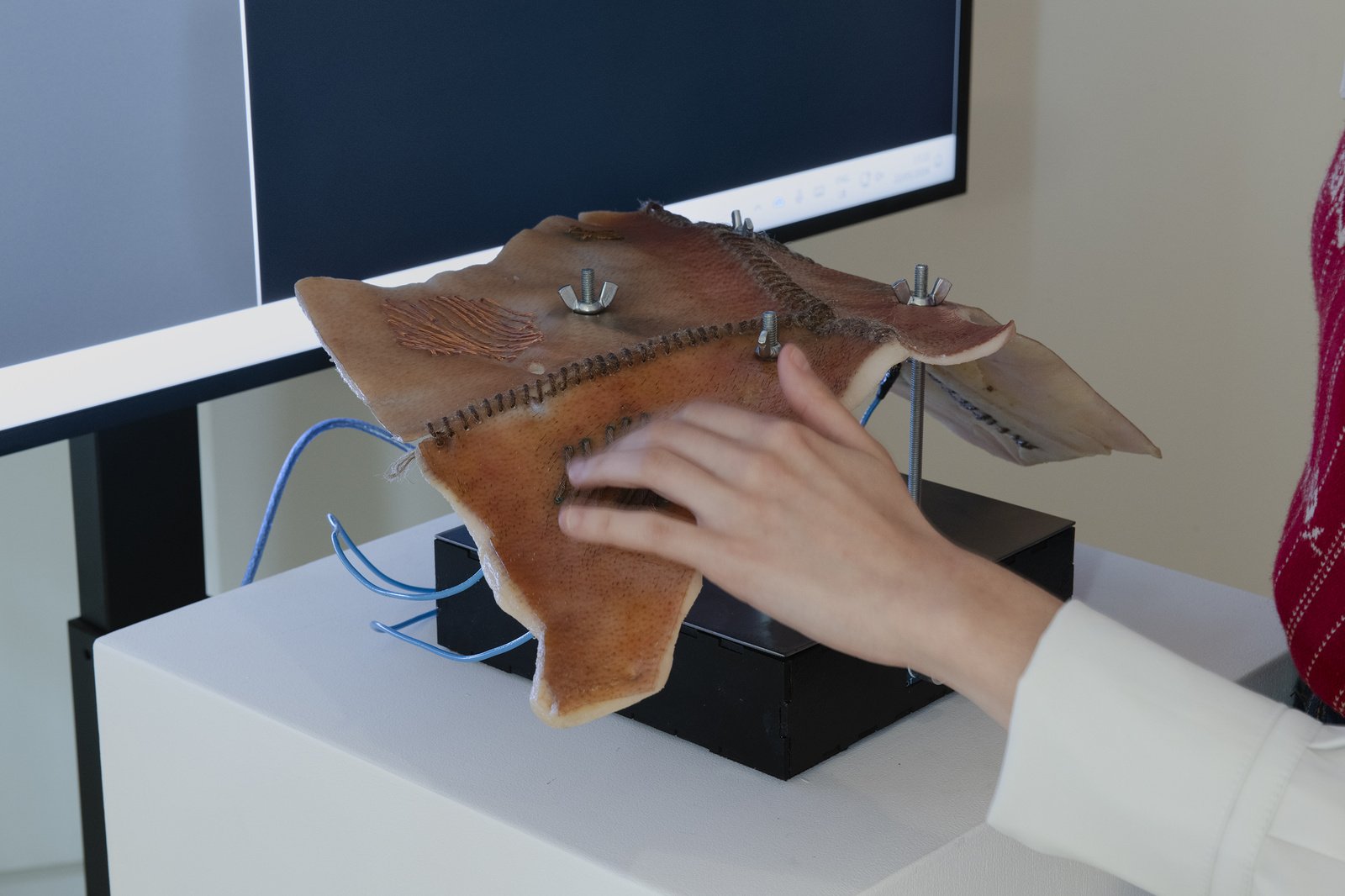
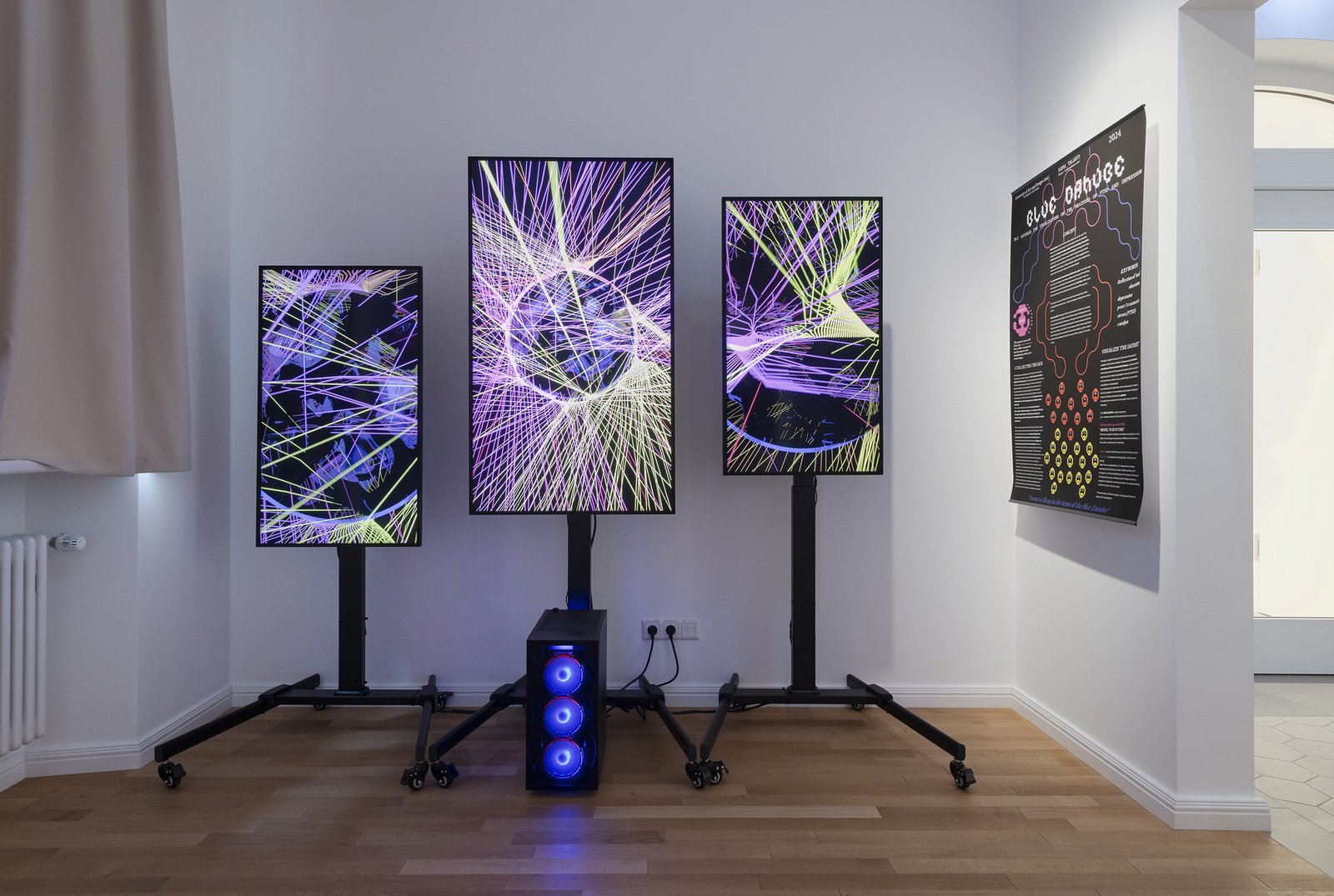
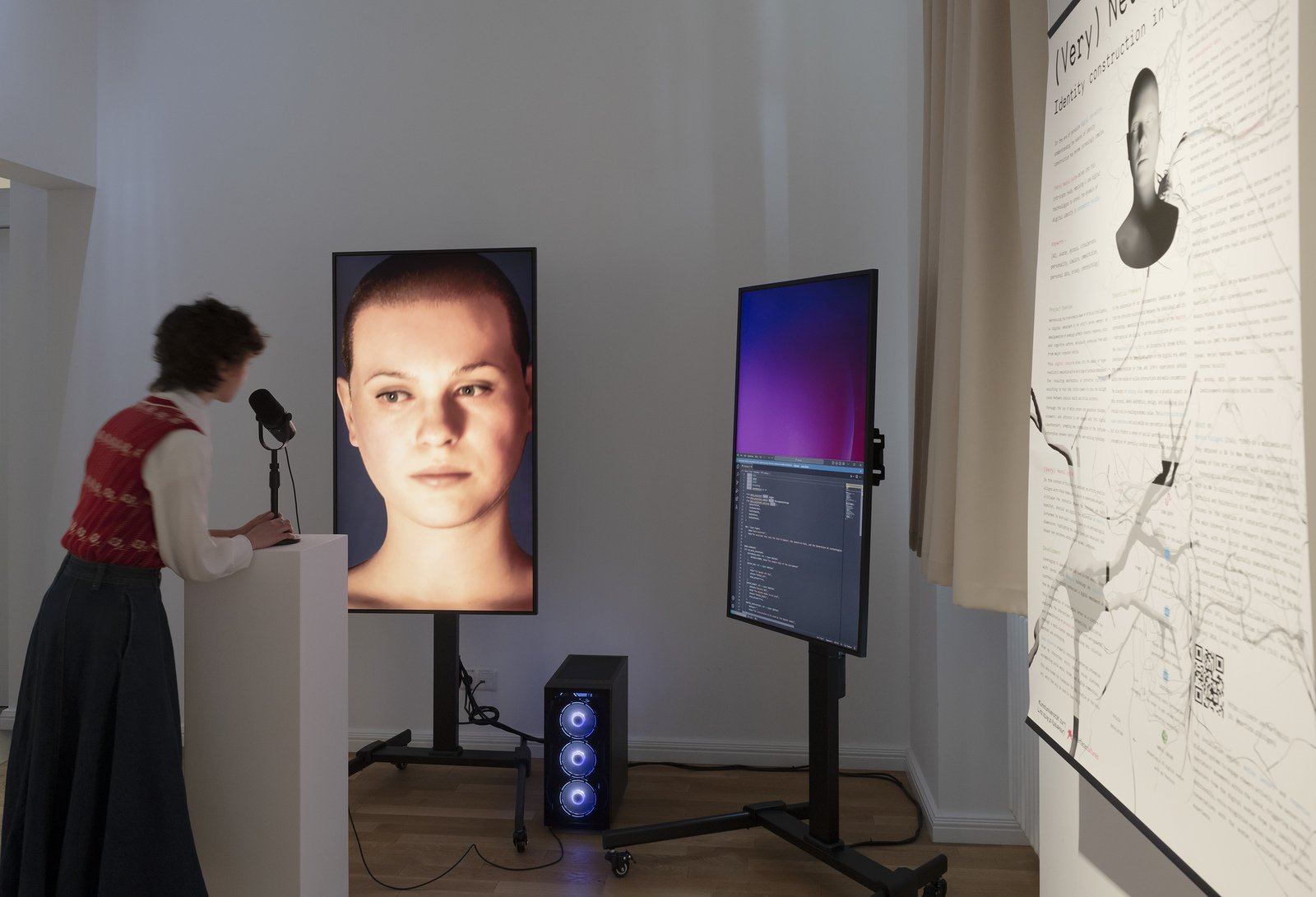
In Bridderhaus, a bit outside of the city center of Esch, the exhibition ends with works by six students of the Interface Cultures Master Linz Künstuniversität – Salma Aly, Alex Fallica, Simon Hehl, Martina Pizzigoni, Sofia Talanti, Emma Silvana Tripaldi – and local artist Serge Ecker. In Datamorphosis, the exhibition by the students of Linz Künstuniversität, artistic investigations are shown around the notion of the “black box” – its inputs and outputs, as well as the binaries that the digital sphere is essentially made up of. The artworks have an experimental vibe, bordering on fun and gimmicky, with installations like a plant connected to a smartphone on TikTok which is recording its energetic vibrations; an effort to track how the algorithm responds to non-human behavior. With Passages, Ecker thematizes the connection between digital infrastructures and older, physical ones. Taking up the site-specific theme of steel production in Luxembourg in the 19th and 20th centuries, the work shows how these older frameworks have become obsolete and inaccessible in the digital age. The main part of the artwork is a sculpture that shows the ARBED tunnel between Laangegronn and Esch-sur-Alzette, which was originally used as a transportation route for ore and later as a container for a local TV antenna cable. Made by 3D-scanning in a material that looks like stone, the sculpture is a small-scale replica of the entire 1.800 meter-long tunnel. With this sculpture, Ecker quite humbly shows a site that used to be essential for the area, which is now little more than a ruin of the past. It is an important reminder of the materiality of our current digital infrastructures and, perhaps, their future ruins.
What unites both the old and the new infrastructures which are thematized in Cyber Structures are the social forms they are generated and motivated by, be they the desire for connection, power, safety or wealth. As we are reminded again and again in these works that deal with the materiality of the digital, infrastructure is not only roads and data centres, but just as much the relations, attachments, and actions that reproduce a particular kind of life across time and space.




Artist(s): ScanLAB Projects, Ziang Wu and Mark Ramos, Lucas LaRochelle, Corine Vionnet, Kunstuniversität Linz (Salma Aly, Alex Fallica, Simon Hehl, Marina Pizzigoni, Sofia Talanti, Emma Silvana Tripaldi), Serge Ecker, Xenorama
Exhibition Title: Cyber Structures: Material Realities – Digital Experiences
Link: https://www.elektron.lu/en/
Venue: Konsthal Esch, Bridderhaus, and public spaces around Esch-sur-Alzette
Place (Country/Location): Esch-sur-Alzette, Luxembourg
Dates: 18.05 – 29.09.2024
Curated by: Françoise Poos, Vincent Crapon
Photos by: Franz Wamhof
